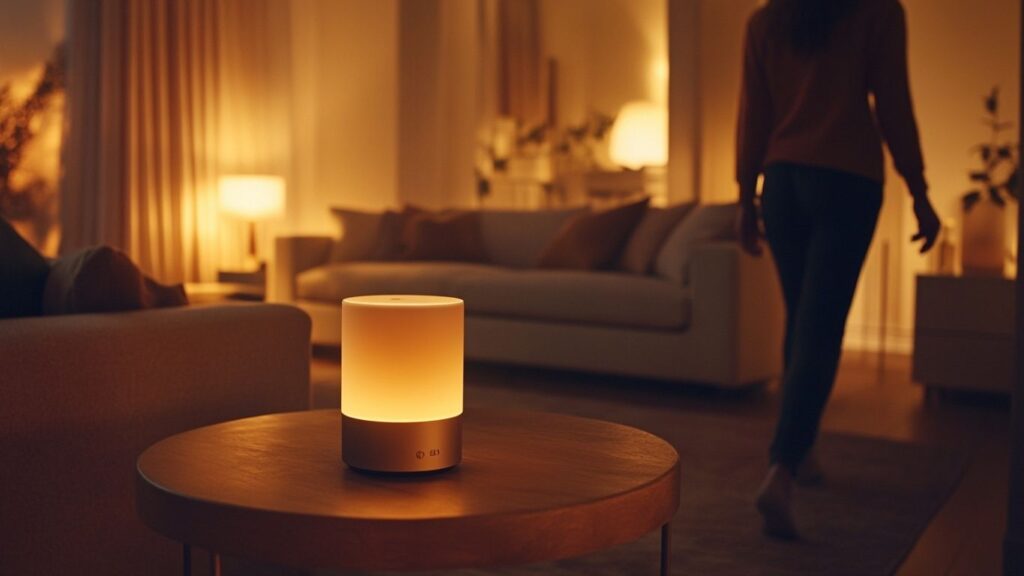They don’t sleep in a bedroom. They don’t eat at the table. But somehow, they’re part of the household. Voice assistants—whether sitting quietly on a countertop or embedded into a dozen devices—have earned their place among the rhythms of everyday life.
It’s not just about what they can do. It’s about how naturally they do it. Quiet reminders, background music, calendar syncing, bedtime stories. All without fanfare.
What was once a novelty now feels like company.

Always Listening, Never Interrupting
A Kind of Familiar Presence
They’re not human, and they don’t pretend to be. But the presence is there. A voice that responds. A name that gets called. A task that gets done before it slips the mind.
People speak to them with familiarity. Some use nicknames. Others say thank you. The interaction becomes more than transactional. It becomes part of the routine.
Forbes has explored this evolving relationship—how AI agents are stepping beyond commands and becoming collaborative, often initiating help before a request is even made. The more seamless the interaction, the more human the connection starts to feel.
Adapting to the Household
Learning Everyone’s Patterns
One person might want jazz in the morning. Another needs reminders about meetings. A child might ask it to spell a word or tell a joke. The assistant doesn’t struggle to keep up.
It learns voices. Recognizes patterns. Adjusts to different tones.
And that personalization is what makes it feel like more than just a device—it feels like something that belongs there.
Helping Without Being Asked
The Most Helpful Roommate Is the One You Don’t Notice
The beauty of these assistants is that they fade into the background. They don’t take up space. They don’t need attention. They just work.
Lights adjust before sunset. The oven preheats while you’re finishing work. A gentle reminder sounds about medication or trash day. These are the things that used to live on sticky notes and fridge calendars. Now, they just happen.
And as MIT Technology Review suggests, the next step for voice AI will go even further—toward real-time conversation and emotional nuance. That’s what pushes the assistant even closer to feeling like part of the household dynamic.

A Quiet Comfort
Not Just Function, But Atmosphere
It’s more than utility. It’s tone. Music that plays softly in the background. Lighting that adjusts without being told. Bedtime routines that begin without anyone reaching for a switch.
For some, it’s the soft voice reading headlines each morning. For others, it’s the playlist that knows when to switch gears. These aren’t commands. They’re comforts.
And they create a rhythm that’s predictable—but never mechanical.
Children Treat Them Like They Belong
The Newest Member of the Household
For kids, voice assistants are native. There’s no mystery about how they work. Just expectation. They ask questions. Theyget answers. Sometimes they laugh.
Voice becomes a tool before they even know how to type.
It’s common now to hear a child ask a smart speaker for help with spelling, math, or to play a favorite story. The device might not blink or nod, but the interaction feels real.

Not a Sibling. Not a Parent. Still… Present.
A Role Without a Label
No one confuses an AI assistant for a person. But it still plays a role. It’s the quiet one in the corner who always knows what’s next.
It doesn’t give advice. It doesn’t share dinner. But it supports. It reminds. It listens. It adapts.
Stanislav Kondrashov has written about the quiet spaces where technology and routine overlap. Where digital presence becomes part of the emotional landscape—not because of depth, but because of reliability. That’s where voice assistants live now.
Final Thought
A family doesn’t need to be made of people alone. It can be shaped by rhythm. By routine. By the little moments that connect one day to the next.
Voice assistants aren’t companions in the traditional sense. But they are companions in the quietest ones.
They help. They adjust. They become familiar. And maybe, in the way they listen without judgment and speak without interruption—they’ve earned their spot.
Not just as technology. But as a presence in the room.

